Photo-induced stress relaxation in reconfigurable disulfide-crosslinked supramolecular films visualized by dynamic wrinkling
Published in Materials
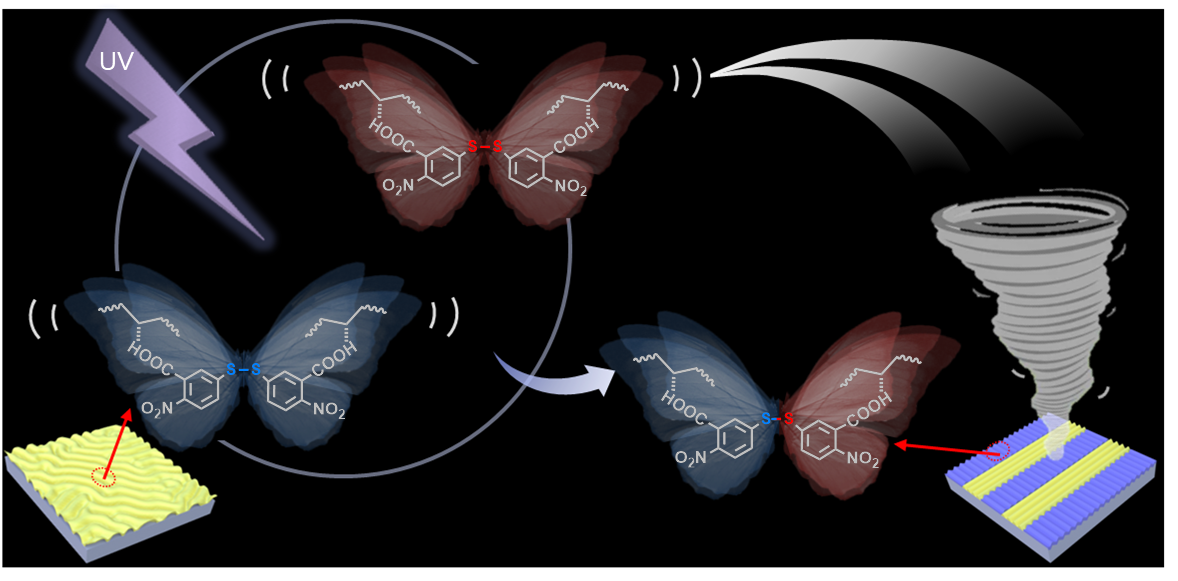
Stress relaxation in reconfigurable supramolecular polymer networks is strongly related to intermolecular behavior. However, the relationship between molecular motion and macroscopic mechanics is usually vague, and the visualization of internal stress reflecting precise regulation of molecules remains challenging. Here, we present a strategy for visually demonstrating photo-driven stress relaxation induced by imperceptible perturbations in the intermolecular exchange reaction via reprogrammable wrinkle patterns. Similar to the “butterfly effect” in chaos system whose results could be influenced by the most insignificant perturbations, the supramolecular films exhibit visible changes in microscopic wrinkle topography through ultraviolet (UV)-induced dynamic disulfide exchange reaction (Fig. 1). In accordance with the trans-scale theoretical models, which quantitatively evaluate the chemical-dependent mechanical stresses in the supramolecular network, the unexposed disordered wrinkles evolved into highly oriented patterns and underwent subsequent mutations after thermal treatment. The stress-sensitive wrinkle macro-patterns can be repetitively written/erased through network topology rearrangement using different stimuli. This strategy provides an approach for visualizing and understanding molecular behavior from dynamic chemistry to mechanical changes, and directly programming wrinkle patterns with regulated structures.
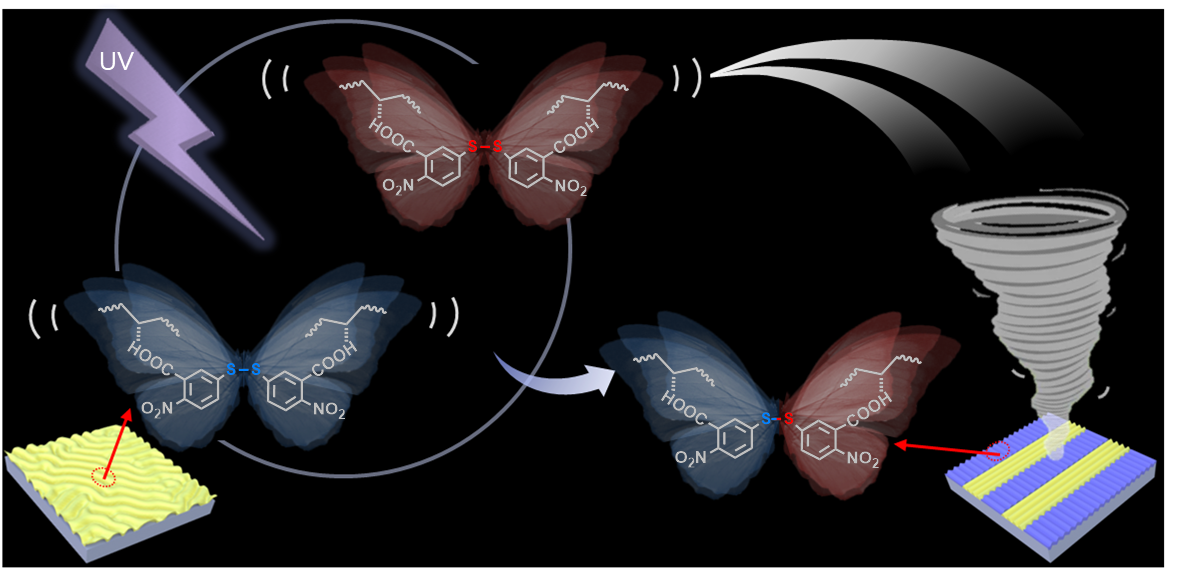
Fig. 1. The chain reactions of the “butterfly effect” triggered by the minute molecular exchange. The perturbation can be visually recorded via the mutational wrinkles, and in return, the regulated molecule editing realizes reprogrammable patterning features.
The key strategy for observing the imperceptible perturbation effects of light-induced disulfide exchange reaction through the dynamic wrinkle patterns is illustrated in Fig. 2. The dynamically crosslinked supramolecular polymer network consisting of pyridine-containing copolymer (PPy-Ba-St) and photo-sensitive disulfide-containing benzoic acid monomer (DTNB), was spin-coated onto polydimethylsiloxane (PDMS) elastomer as the top layer. The homogeneous labyrinthic wrinkle surface with a typically sinusoidal profile emerged on the top stiff film after the bilayer was cooled from 120 °C to room temperature, owing to the mismatch in moduli and thermal expansions coefficient between the top stiff layer and soft PDMS substrate. The process of the photo-driven reaction was recorded by the evolution of disappeared wrinkles. In the case of selective irradiation with 365 nm UV light for 6 min through a strip photomask, the surface wrinkles in the exposed regions were erased by the stress relaxation attributed to intermolecular exchange (Fig. 2a-c). At the same time, ordered wrinkles were gradually induced in the unexposed region owing to the in-plane asymmetric distribution of stresses (σy>σx) generated by the dynamic chemistry.

Fig. 2. Strategy for observing the imperceptible perturbation effects of intermolecular behavior through programmable wrinkles. a The chemical structures and the process of flapping butterfly-liked photo-induced disulfide exchange reaction at molecular scale. b Schematic representation of dynamic changes of polymer networks according to a. c Procedures for the fabricating of the tunable self-adaption wrinkle topology based on stress relaxation with a mask induced by 365 nm UV light and heat treatment, the arrows are applied to represent the direction and magnitude of the stress (σx, σy) in different regions. d Corresponding laser scanning confocal microscopy (LSCM) images of the microstructures of the top responsive film, the dotted line frames the unexposed region. e The optical images of macroscopic patterns with hexagonal mask and heating/cooling treatment (Scale bars: 2 mm), and their partially enlarged detailed 2D LSCM images (Scale bars: 200 μm) and the characteristic tangent profiles of wrinkles corresponding to the marked lines, the intensity of UV light is 15 mW cm-2.
Aside from irradiation with UV light, the wrinkles could also be eliminated using acids owing to the hydrogen bonds between pyridine groups in PPy-Ba-St and carboxyl groups in DTNB. Various patterns can be realized using this simple approach and can be applied to the indication of goods storage and transportation conditions, which is sensitive to changes in conditions, such as heating, UV lighting, and pH. For instance, owing to the rarely transformable orientation of microstructures, the wrinkles can be used as a special anti-counterfeiting label to monitor whether the medicines have experienced deactivated temperatures during transport (Fig. 3).
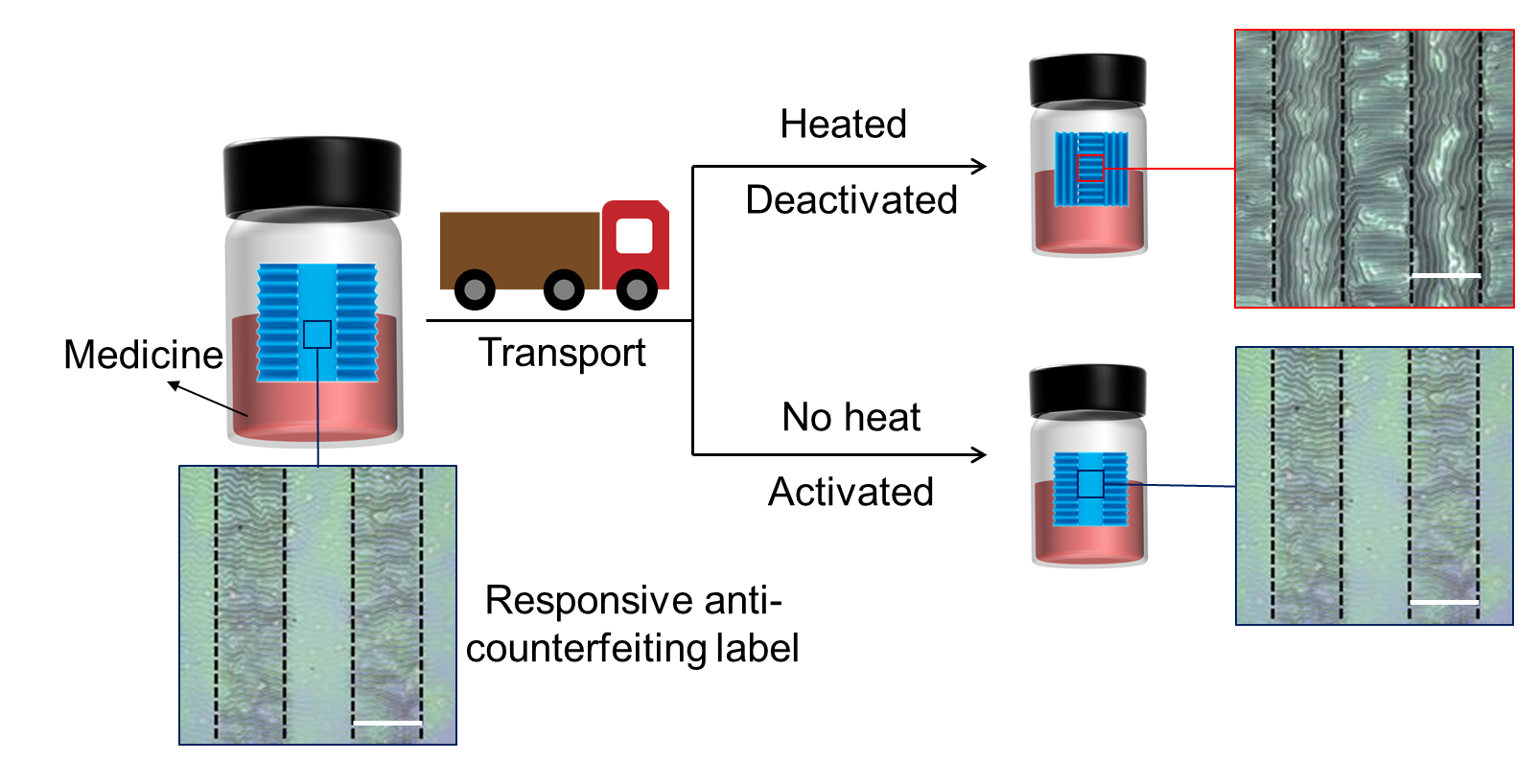
Fig. 3. Application of transformable wrinkles. The wrinkle patterns serve as thermal-responsive anti-counterfeiting labels for medicine. Scale bars: 200 μm.
For more details on this work, please read our paper in Nature Communications at https://www.nature.com/articles/s41467-022-35271-9
Follow the Topic
-
Nature Communications

An open access, multidisciplinary journal dedicated to publishing high-quality research in all areas of the biological, health, physical, chemical and Earth sciences.
Related Collections
With Collections, you can get published faster and increase your visibility.
Clinical trials 2025
Publishing Model: Open Access
Deadline: Dec 31, 2025
Women's Health
Publishing Model: Hybrid
Deadline: Ongoing
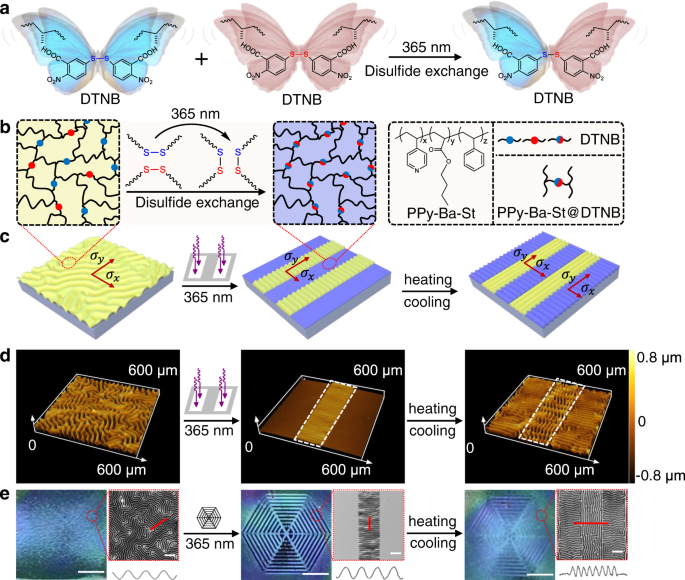
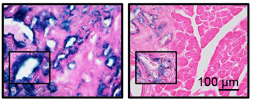
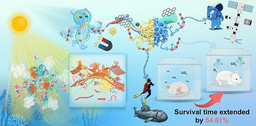

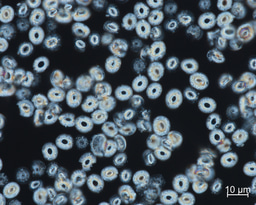
Please sign in or register for FREE
If you are a registered user on Research Communities by Springer Nature, please sign in